
Upper ocean heating in the equatorial Pacific is likely to make the East Asian monsoon season wetter, according to a new study.
Stronger winds and warming of the upper ocean layers in the western tropical Pacific have been linked to increased rain in eastern China.
A study co-led by a Rutgers researcher suggests that increased ocean heat in the equatorial Pacific region could intensify the East Asian monsoon, leading to wetter seasons. This increase is linked to shifts in Earth’s orbit and changes in solar radiation distribution. The findings, drawn from marine organisms and climate models, underline the crucial role of oceanic heat in regulating the global hydroclimate.
According to new research, upper ocean heating in the equatorial Pacific – a key oceanographic region in Earth’s climate system – is likely to make the East Asian monsoon season wetter.
Recent increases in ocean heat content – where energy is absorbed by the waters – have been implicated in the intensification of tropical storms that draw their energy from the surface of the ocean. However, the link between ocean heating and rainfall on land is less clear. A study co-authored by a Rutgers researcher provides insight into this link. It will be published today (October 19) in the journal Nature.
“Our study suggests variations in ocean thermal structure affect the delivery of moisture, latent heat, and what happens when they arrive on land,” said Yair Rosenthal. He is a professor of marine and coastal sciences in the Rutgers’ School of Art and Sciences and School of Environmental and Biological Sciences.
Rosenthal said the changes in the latitudinal temperature gradient – the difference in sea-surface temperature between low and high latitudes – not only control how energy is absorbed by the equatorial upper ocean but how winds carry the moisture from the ocean onto land.
The study, which was led by Zhimin Jian of Tongji University in China, found that over the past 360,000 years, increases in monsoonal rain in eastern China correlated with increases in the heat content of the Indo-Pacific Warm Pool–a region where sea surface temperatures remain above ~82°F (~28°C) year-round–likely due to enhanced transport of moisture and latent heat absorbed in the water vapor from the ocean to the continent.
According to the study, the changes in upper ocean heat content follow shifts in the Earth’s orbit that occur about every 23,000 years and change the distribution of incoming solar radiation at each latitude.
By using two foraminifera species, calcareous marine organisms, one a surface dweller and the other that lives approximately 200 meters below the sea surface, the scientists reconstructed how the upper ocean thermal structure gets its heat and energy. They compared their results with climate model simulations and reconstructions of the monsoonal precipitation in eastern China for the same period.
The coupling of ocean heat content and monsoon variations, both coordinated by insolation changes at astronomical timescales, is critical for regulating the global hydroclimate, the researchers said.
Reference: “Warm pool ocean heat content regulates ocean–continent moisture transport” by Zhimin Jian, Yue Wang, Haowen Dang, Mahyar Mohtadi, Yair Rosenthal, David W. Lea, Zhongfang Liu, Haiyan Jin, Liming Ye, Wolfgang Kuhnt and Xingxing Wang, 19 October 2022, Nature.
DOI: 10.1038/s41586-022-05302-y
Co-authors include Zhimin Jian, Yue Wang, Haowen Dang, Zhongfang Liu, Haiyan Jin, Liming Ye, Xingxing Wang of Tongji University; Mahyar Mohtadi of the University of Bremen; David Lea of the University of California, Santa Barbara; and Wolfgang Kuhnt of Christian-Albrechts-University.

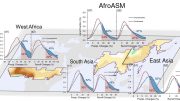

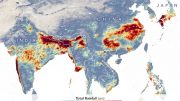
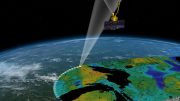
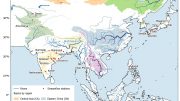

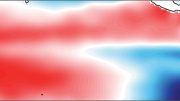

Be the first to comment on "Ocean Heating Will Increase Monsoon Rainfall in East Asia"